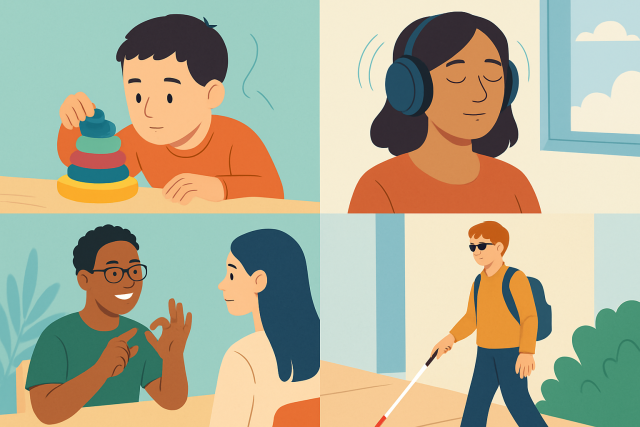
Understanding Autism Savant Skills and Their Development
Discover the fascinating world of autism savant skills—remarkable talents arising alongside autism—a...
Speech sound disorders can throw a wrench into a person's ability to articulate speech sounds clearly. This impacts not just how they communicate but also their social development.
A speech sound disorder appears when someone has trouble producing sounds correctly. Kids usually learn to speak clearly as they grow. However, those with speech sound disorders might leave out, swap, or twist certain sounds enough to make understanding them challenging.
Many individuals on the autism spectrum wrestle with communication hurdles including struggles with speech sounds. Speech sound disorders can show up on their own, but for autistic individuals their speech patterns often have a distinctive flavor shaped by sensory sensitivities or quirks in social communication or motor coordination challenges.
Understanding speech sound disorders within the broader tapestry of autism is absolutely important if we want to provide support that genuinely respects each person's unique way of communicating, along with their own developmental rhythm and needs. It is kind of like tuning in carefully rather than just turning up the volume.
Catching speech sound disorders early can really make a world of difference. Parents, caregivers and educators should keep an eye out for speech patterns that don’t follow the usual developmental script. Look for frequent mispronunciations, mistakes that change every time or the classic struggle of being understood by people unfamiliar with the child’s way of speaking.
Getting to the bottom of speech sound disorders is a process that takes a bit of patience and a keen eye. It’s not just about listening carefully—there’s a whole method behind it. Professionals usually start by taking a detailed history and then move on to a variety of assessments that look closely at how someone produces sounds. It’s a bit like piecing together a puzzle where every sound counts, and even the smallest mispronunciation can tell a story. The goal? To make sure the right support is put in place, tailored to the individual's unique way of speaking.
Diagnosing speech sound disorders starts with a careful evaluation by a speech-language pathologist (SLP). They use a variety of assessment tools, observe how speech plays out in different situations, and take care to rule out other possibilities like hearing issues.
There are quite a few misconceptions floating around about speech sound disorders. Some people assume these issues just magically fix themselves over time, while others mix up speech differences tied to culture or language with genuine disorders. It’s also all too common to mistakenly chalk these challenges up to laziness or a lack of effort.
Helping someone with a speech sound disorder calls for patience and empathy. Creating a supportive and positive environment can give their confidence a much-needed boost. Small thoughtful actions like modeling clear speech, leaning on visual cues and warmly acknowledging their efforts often work wonders to encourage progress.
Treatment for speech sound disorders usually involves focused speech therapy led by a speech-language pathologist who knows their stuff. This often includes articulation therapy which helps individuals nail those tricky sounds and phonological therapy which digs into the patterns and rules behind the sounds we use every day. Starting early is often the name of the game since younger kids tend to pick things up faster and make noticeable strides. With consistent therapy sessions and solid support at home many people see improvements in how clearly they speak and gain a nice confidence boost along the way.
| Treatment Method | Target Age Group | Goals | Typical Duration | Expected Outcomes |
|---|---|---|---|---|
| Articulation Therapy | Toddlers to teens | Pinpoint and fix specific sound slip-ups | Several months to a year | Noticeably clearer pronunciation of tricky sounds |
| Phonological Therapy | Preschool to school-age | Tackle sound pattern hiccups for smoother speech | Several months to a year | Speech that’s easier to understand and just sounds right |
| Early Intervention | Infants to preschool | Nip delays in the bud before they grow | Ongoing as needed | Faster progress in speech and a boost in communication confidence |
| Combined Approaches | All ages | Tailored plans that fit each person like a glove | Varies | Better communication skills and smoother social interactions |
If you're wondering what is a speech sound disorder, it's really wise to check in with a speech-language pathologist sooner rather than later if you notice persistent speech hiccups. Catching things early and kicking off intervention often sets the stage for the best possible progress.

Discover the fascinating world of autism savant skills—remarkable talents arising alongside autism—a...

Autism spectrum disorder encompasses diverse forms with unique challenges and strengths. This guide...

Spotting the signs of a toxic relationship early can save your emotional health. Discover key red fl...

Contempt is a toxic emotion that can erode love and respect in relationships. Discover what contempt...